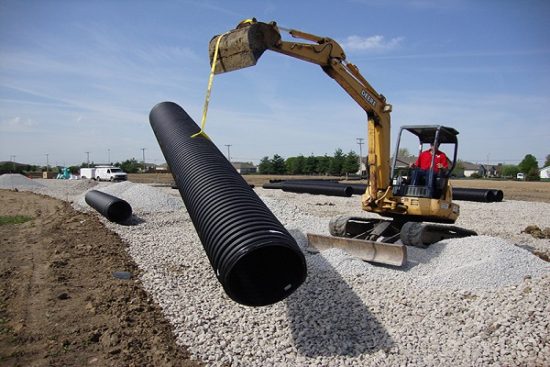- Course No E – 1321
- PDH Units 3.00
No data found for Custom Course Number
No data found for Custom Course Units
- Course No E – 1321
- PDH Units 3.00
Intended Audience: civil engineers and other design and construction professionals
PDH UNITS: 3
This course provides an introduction to drainage pipe strength, cover and bedding. A drainage pipe is defined as a structure (other than a bridge) to convey water through a trench or under a fill or some other obstruction. Materials for permanent-type installations include non-reinforced concrete, reinforced concrete, corrugated steel, asbestos-cement, clay, corrugated aluminum alloy, and structural plate steel pipe. Course Outline 1. INTRODUCTION 2. SELECTION OF TYPE OF PIPE 3. SELECTION OF N VALUES 4. RESTRICTED USE OF BITUMINOUS-COATED PIPE 5. MINIMUM COVER 6. CLASSES OF BEDDING AND INSTALLATION 7. STRENGTH OF PIPE 8. RIGID PIPE 9. FLEXIBLE PIPE 1O. BEDDING OF PIPE (CULVERTS AND STORM DRAINS) This course will give you guidance you can apply when designing drainage systems using buried pipes and conduit.
Learning Objectives
At the successful conclusion of this course, you’ll be able to identify and discuss:- Learn about the strength and functional characteristics of different types of drainage pipe available commercially;
- Learn guidelines for selection of an appropriate coefficient of roughness (“n”) for different types of drainage pipe;
- Learn minimum cover recommendations for different types of drainage pipe;
- Learn maximum cover recommendations to avoid the possibility of crushing underground pipe and conduits;
- Learn the different classes of bedding for underground pipe and conduits;
- Learn the strength properties of rigid and flexible conduit and pipe materials; and
- Learn about bedding for culverts and storm drains..
Course Reviews
3
- 5 stars0
- 4 stars0
- 3 stars0
- 2 stars0
- 1 stars0
No Reviews found for this course.
Once completed, your order and certificate of completion will be available in your profile when you’re logged in to the site.










